OpenSees Cloud
OpenSees AMI
A Tale of Two Element Formulations
Original Post - 23 Feb 2020 - Michael H. Scott
The question of whether to use the force-based or displacement-based formulation for material nonlinear frame analysis is one that comes up a lot. The answer depends on a few factors, mostly the material and the element length.
To get a sense of the basic issues, I will compare the two element formulations with a numerical example from my graduate course in Eastchester on nonlinear structural analysis. I’m not going to write any equations, but you can find more information on the formulations in Neuenhofer and Filippou (1997).
The model is of a W14x90 steel member that supports a constant axial load, N, and an increasing moment, M, applied about the member strong axis. The axial load is N=0.2FyA and the applied moment increases from zero to 2My, where My=FyS. The section area, A, and section modulus, S, for a W14x90 are found in the Steel Manual.
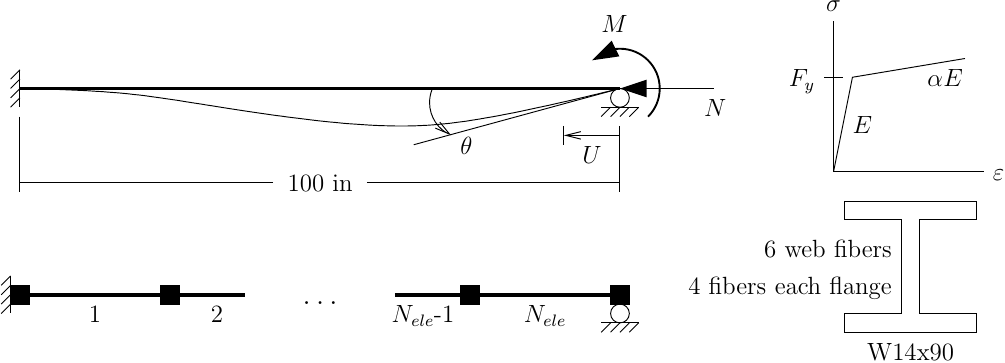
A fiber discretization of the member cross-section captures axial-moment interaction. The stress-strain response of each fiber is bilinear with Fy=50 ksi, E=29,000 ksi, and \(\alpha\)=0.005. We are loading this thing into ridiculousness, allowing indefinite strain-hardening and ignoring geometric nonlinearity.
Displacement-Based Formulation
The displacement-based formulation (dispBeamColumn in OpenSees) uses shape
functions for the axial and transverse displacement fields along each element.
The distributions of section deformation interpolated along each element are
constant axial deformation and linear curvature. The section forces satisfy
weak equilibrium with the element end forces.
Consistent with finite element theory, we improve the computed solution by increasing the number of elements along the member length (h-refinement). We will look at the global and local response of the W14x90 using Nele=1, 4, and 8 elements. Each element has two Gauss integration points.
The moment-rotation and moment-axial displacement response of the beam are shown below. The one element solution severely overestimates the yield point; however, this improves as the number of elements increases. The moment-rotation response using eight elements is right on the exact solution, but the moment-axial displacement response remains slightly off.
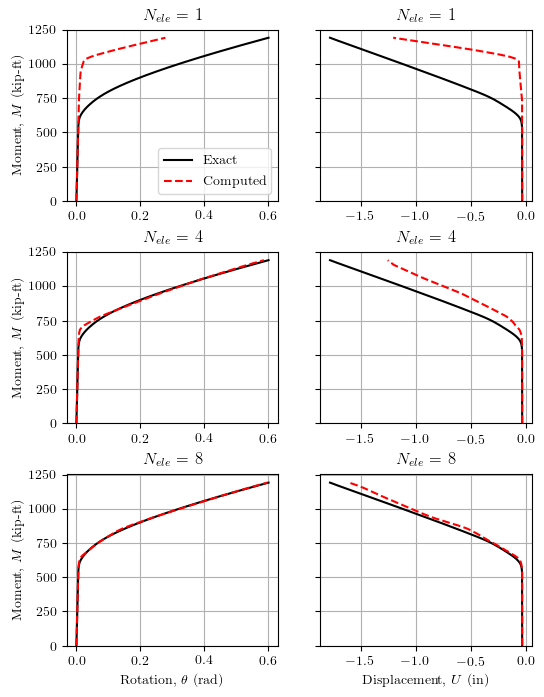
The local flexural response at the final load step is shown below. The curvature distribution along the member is piecewise linear and discontinuous between elements. As the number of elements increases, the curvature approximation improves. Furthermore, the bending moments computed at each Gauss point start to line up with the exact solution as the number of elements increases.
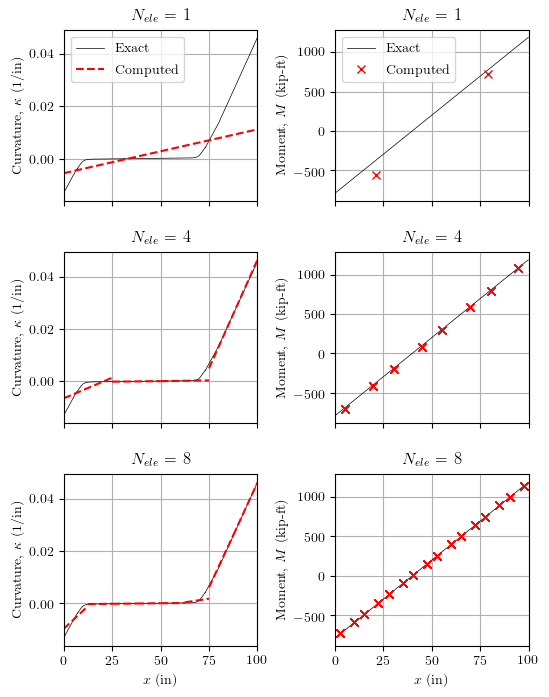
The local axial response is a little more revealing. The distribution of axial deformation along the member is piecewise constant. It will take more elements than is practical to get a decent approximation of the exact solution. The axial forces at each Gauss point appear to be all over the place, but not really. For each element, they average out to the exact solution.
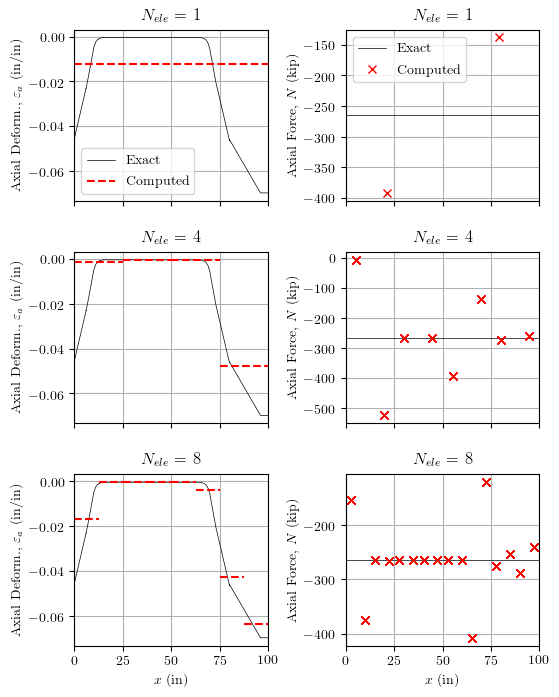
The averaging of internal axial forces is a manifestation of weak equilibrium. The same thing happens with the flexural response, but there’s a linear weighting function that makes the weak equilibrium less obvious.
At some point, saying that displacement-based elements are bad because of the axial response becomes a straw man argument. If we used a higher order axial displacement function with an internal node (p-refinement), the axial response would be much better.
Force-Based Formulation
The force-based formulation (forceBeamColumn in OpenSees) uses the known equilibrium solution for a beam–the one you learned in statics–to interpolate constant axial force and linear bending moment along the element length. Compatibility between section deformations and element deformations is satisfied in an average sense.
To improve the computed solution with force-based elements, we increase the number of integration points in an element. For the W14x90, we will use one element with Np=3, 4, and 5 integration points. The integration is Gauss-Lobatto, which places an integration point at the element ends to capture the extreme flexural response.
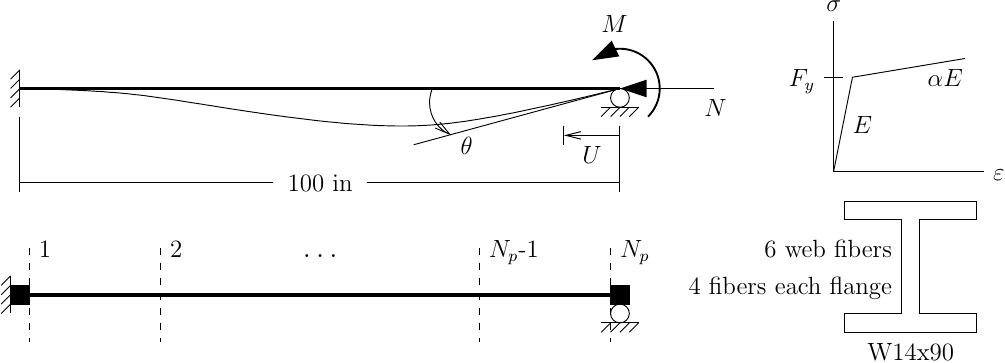
The global moment-rotation and moment-axial displacement response of the beam are shown below. In all cases, the yield point is captured exactly. The post-yield moment-rotation response is too flexible with three Lobatto points, but this improves as we use more integration points. The moment-axial displacement response is a little bizarre though.
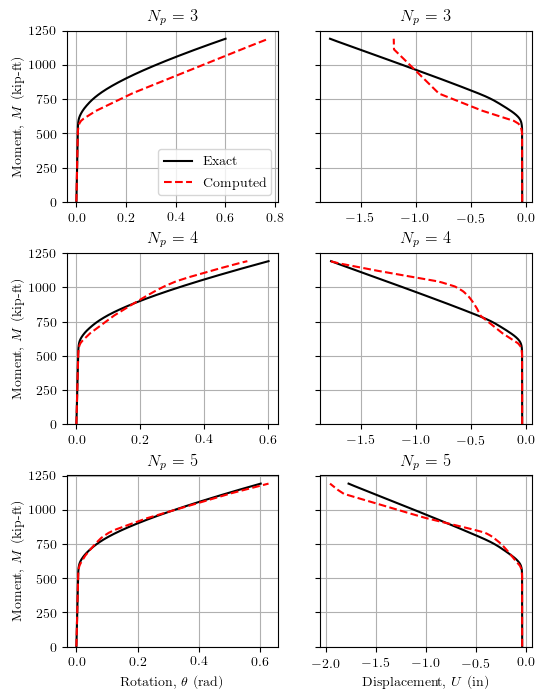
The local flexural response is shown below for the final load step. The internal bending moment adheres to a linear distribution along the element and approaches the exact solution as the number of integration points increases. Likewise, the curvature at each integration point improves as the number of integration points increases.
Clearly, just because it’s a force-based element does not mean the exact equilibrium solution is found. This is a common misconception. All that you get is a linear distribution of internal bending moment, not the exact distribution.
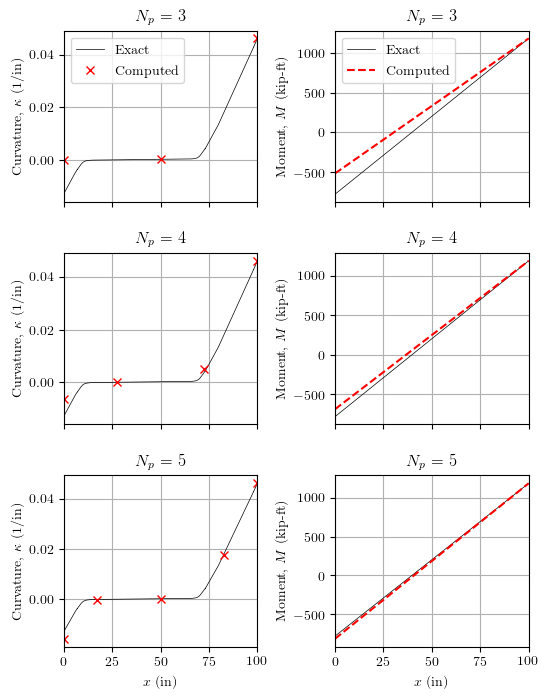
The local axial response also improves as the number of integration points increases. In all cases, the internal axial force matches the applied axial load, which is good. Go statics!
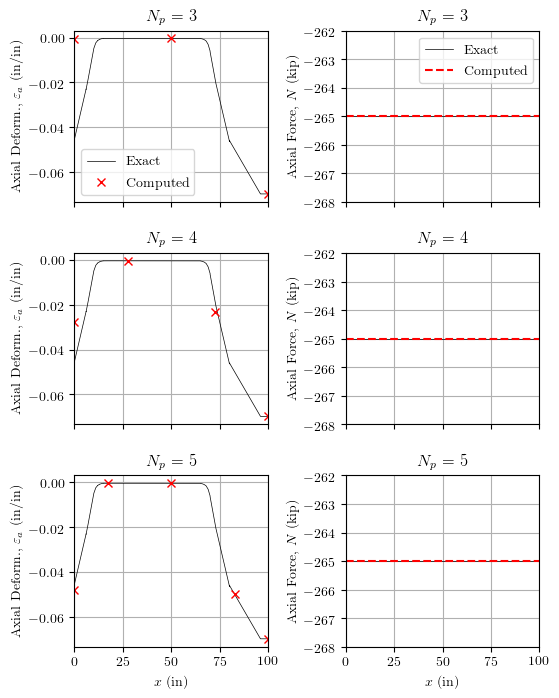
If axial-moment interaction is a concern, e.g., reinforced concrete moment frames, go with force-based elements. If you are constrained to use several short elements, e.g., for a pile with p-y soil springs every few feet, then I’d recommend displacement-based elements.
Other formulations are available; however, the displacement-based and force-based formulations give bounds on what to expect from alternative formulations.
There are other issues, such as localization, to address with frame finite elements. But this post is getting lengthy and should be wrapped up. Let me know if you have any questions in the comments section below.
In the spirit of full disclosure, the exact solutions shown throughout this
post were obtained using a fine mesh of force-based elements.
This post was suggested by a reader of the blog. If you would like to suggest a topic, please let me know.
I work on problems related to modeling and nonlinear structural analysis. If these problems are relevant to a current professional project, feel free to reach out.